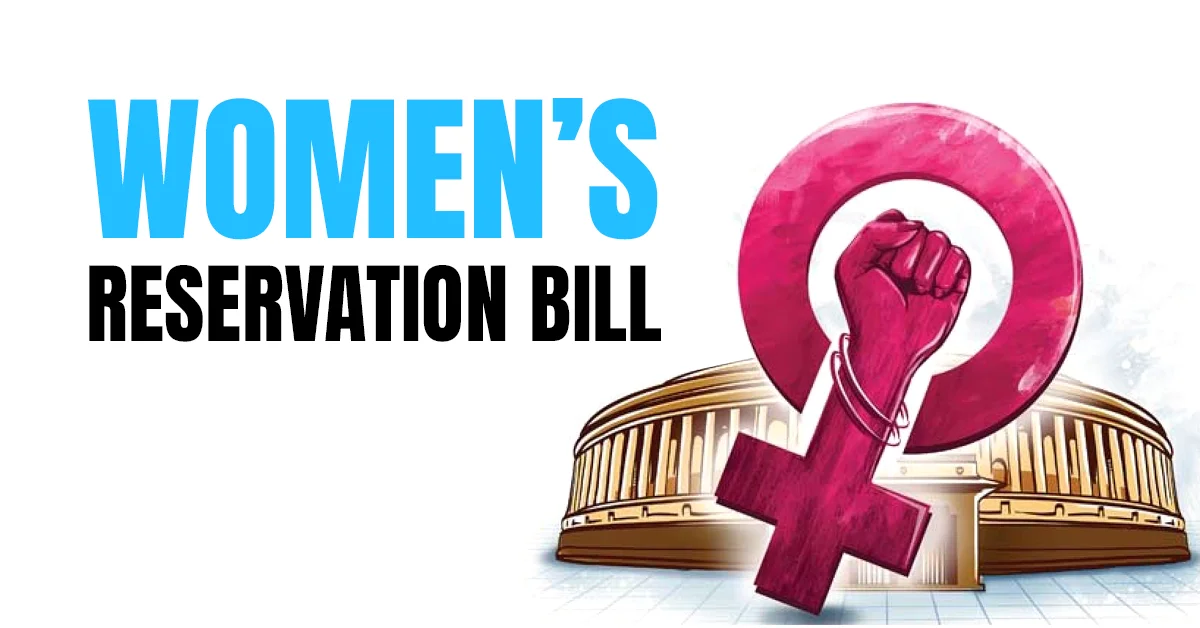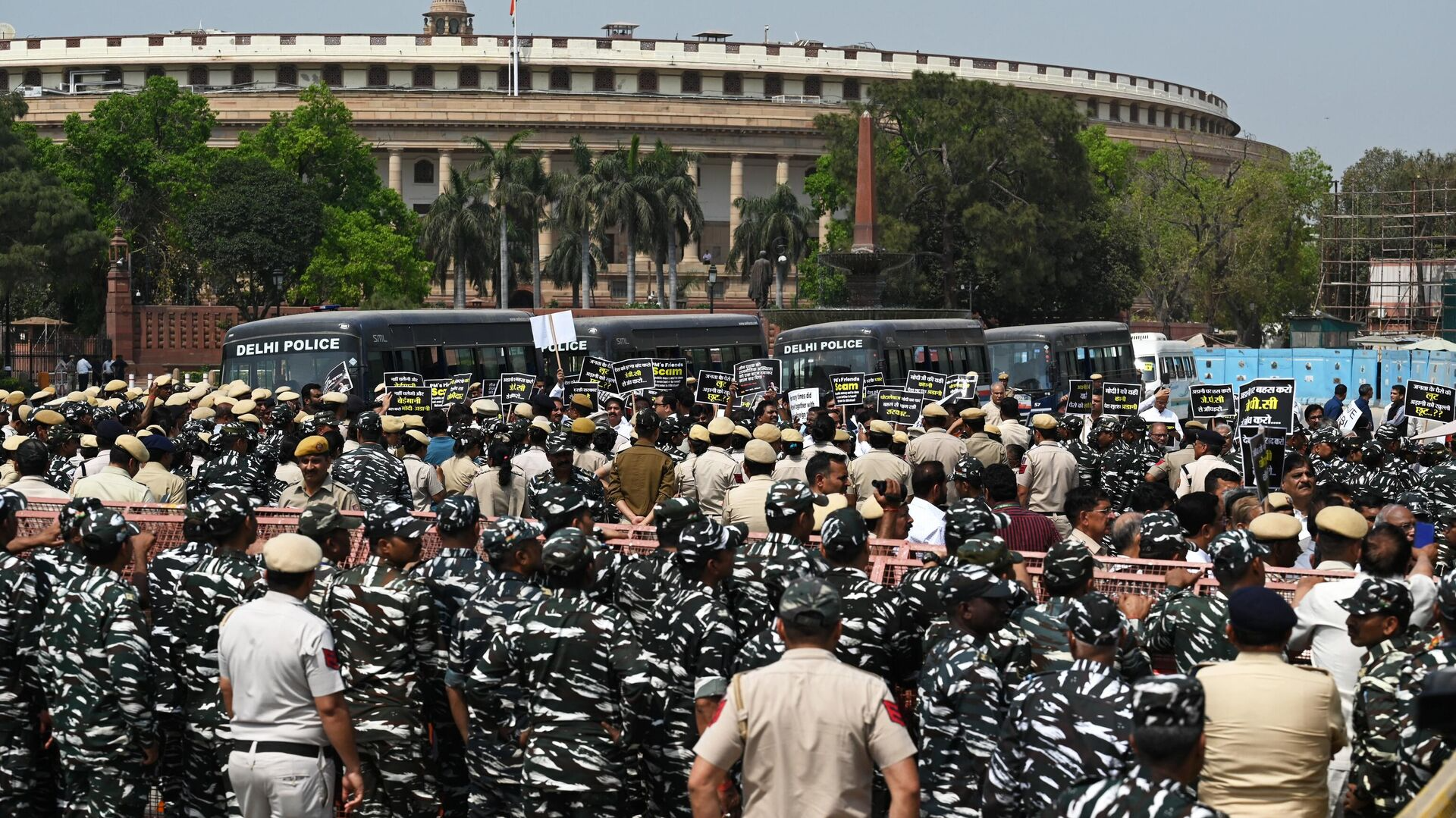Women’s Reservation Bill Passed
Posted On July 11, 2025

In a landmark moment for gender parity in Indian politics, the "Nari Shakti Vandan Adhiniyam," popularly known as the Women’s Reservation Bill, has been passed by the Indian Parliament. This monumental legislation, which reserves one-third (33%) of seats for women in the Lok Sabha (the lower house of Parliament), State Legislative Assemblies, and the Delhi Legislative Assembly, marks a pivotal step towards greater inclusivity and representation in the nation's democratic institutions. The passage of this Bill, after decades of stalled attempts and fervent debate, is seen as a historic achievement, poised to significantly reshape India's political landscape.
The journey of the Women’s Reservation Bill has been long and arduous, spanning nearly three decades. First introduced in 1996, successive attempts to pass similar legislation in 1998, 1999, and 2008 faced various hurdles, including lack of political consensus, opposition from certain regional parties, and the dissolution of various Lok Sabhas, causing the Bill to lapse each time. The consistent demand from women's rights organizations, civil society, and a growing number of political leaders finally culminated in the unanimous passage of this Bill in September 2023, during a special session of Parliament held in the newly constructed Parliament building. The Lok Sabha passed it with overwhelming support (454 votes for, 2 against), followed by the Rajya Sabha's unanimous approval (214 votes for, none against), underscoring a rare moment of political unity on a crucial social reform.
The core provisions of the Nari Shakti Vandan Adhiniyam are as follows-
33% Reservation- The Bill mandates that one-third of the total seats in the Lok Sabha, all State Legislative Assemblies, and the Delhi Legislative Assembly shall be reserved for women.
Sub-quota for SC/ST Women- Within this 33% reservation, a sub-quota will be provided for women belonging to Scheduled Castes (SCs) and Scheduled Tribes (STs). This ensures that marginalized women also receive due representation.
Rotation of Seats- The Bill stipulates that the seats reserved for women will be allotted by rotation to different constituencies after each delimitation exercise. This provision aims to prevent any particular constituency from becoming a permanent "women's seat," thereby encouraging broader participation and avoiding the creation of 'pocket boroughs'.
Duration of Reservation- The reservation is initially set for a period of 15 years from the commencement of the Act. However, Parliament retains the power to extend this period through subsequent legislation.
Implementation Contingency- A critical clause in the Bill states that its implementation will only come into effect after two key processes are completed- the publication of the next decennial census and the subsequent delimitation exercise (redrawing of constituency boundaries based on the new census data).
The conditional nature of its implementation has been the subject of intense debate and a significant point of contention. With the next decennial census, originally due in 2021, yet to be conducted, and delimitation typically following census data, the actual operationalization of the Bill is not immediate. While some legal experts and political commentators speculate that the earliest possible implementation could be for the 2029 General Elections, the exact timeline remains dependent on the government's schedule for conducting the census and initiating the delimitation commission. This delay has led to some criticism, with opponents arguing that it undermines the immediate impact of the legislation. The Supreme Court, in early 2025, refused to entertain pleas seeking immediate implementation, citing the constitutional prerequisites of census and delimitation.
Despite the delayed implementation, the passage of the Women's Reservation Bill is lauded as a monumental victory for women's empowerment in India. Its potential impacts are far-reaching-
Increased Women's Representation- Currently, women constitute only around 15.1% of the Lok Sabha and, on average, a mere 9% in State Legislative Assemblies. The Bill, once implemented, is expected to significantly boost these numbers, bringing India closer to the global average of women's representation in legislatures and providing a critical mass that can genuinely influence policy-making.
More Inclusive Governance- With more women in legislative bodies, it is expected that issues traditionally underrepresented or overlooked, such as women's safety, healthcare, education, childcare, and gender-specific economic policies, will gain greater prominence and receive more focused attention. Women representatives often bring different perspectives and priorities to the table, leading to more responsive and inclusive governance.
Breaking Patriarchal Norms- Increased visibility of women in leadership roles can serve as a powerful inspiration for younger generations, challenging entrenched patriarchal norms and societal attitudes that often limit women's participation in public life. It can foster a perception of women as capable leaders and decision-makers, beyond traditional gender roles.
Learning from Local Bodies- The success of women's reservation in Panchayati Raj Institutions (PRIs) and urban local bodies, mandated by the 73rd and 74th Constitutional Amendments, offers a positive precedent. Studies have shown that women leaders at the grassroots level have effectively driven development initiatives, particularly related to water, sanitation, and health, and have been more responsive to the needs of their communities. The Nari Shakti Vandan Adhiniyam aims to replicate this success at state and national levels.
Global Recognition- The passage of this Bill reinforces India's commitment to gender equality on the international stage, aligning with its obligations under various international conventions and Sustainable Development Goals (SDGs) related to gender equality and political participation. However, the journey to achieving true gender equality in politics extends beyond legislative quotas. Challenges remain, including-
Tokenism vs. Substantive Participation- Ensuring that women representatives are not merely "token" figures but are genuinely empowered to assert their influence within political structures.
Intersectionality- While a sub-quota for SC/ST women is included, the demand for reservation for OBC women within the women's quota remains a point of debate for many political parties.
Capacity Building- Providing adequate training, resources, and support to newly elected women representatives, especially those from marginalized backgrounds, to effectively navigate the complexities of governance and policy-making.
Combating Deep-seated Prejudices- Overcoming societal and political biases that may hinder women's candidacies even in general seats, or undermine their authority once elected.
Despite these challenges, the Nari Shakti Vandan Adhiniyam is unequivocally a landmark legislation. It represents a bold step towards rectifying historical imbalances and empowering half of India's population. As the nation awaits the census and delimitation to pave the way for its implementation, the passage of this Bill stands as a powerful symbol of India's evolving democratic ethos and its aspirations for a more equitable and representative future.
The journey of the Women’s Reservation Bill has been long and arduous, spanning nearly three decades. First introduced in 1996, successive attempts to pass similar legislation in 1998, 1999, and 2008 faced various hurdles, including lack of political consensus, opposition from certain regional parties, and the dissolution of various Lok Sabhas, causing the Bill to lapse each time. The consistent demand from women's rights organizations, civil society, and a growing number of political leaders finally culminated in the unanimous passage of this Bill in September 2023, during a special session of Parliament held in the newly constructed Parliament building. The Lok Sabha passed it with overwhelming support (454 votes for, 2 against), followed by the Rajya Sabha's unanimous approval (214 votes for, none against), underscoring a rare moment of political unity on a crucial social reform.
The core provisions of the Nari Shakti Vandan Adhiniyam are as follows-
33% Reservation- The Bill mandates that one-third of the total seats in the Lok Sabha, all State Legislative Assemblies, and the Delhi Legislative Assembly shall be reserved for women.
Sub-quota for SC/ST Women- Within this 33% reservation, a sub-quota will be provided for women belonging to Scheduled Castes (SCs) and Scheduled Tribes (STs). This ensures that marginalized women also receive due representation.
Rotation of Seats- The Bill stipulates that the seats reserved for women will be allotted by rotation to different constituencies after each delimitation exercise. This provision aims to prevent any particular constituency from becoming a permanent "women's seat," thereby encouraging broader participation and avoiding the creation of 'pocket boroughs'.
Duration of Reservation- The reservation is initially set for a period of 15 years from the commencement of the Act. However, Parliament retains the power to extend this period through subsequent legislation.
Implementation Contingency- A critical clause in the Bill states that its implementation will only come into effect after two key processes are completed- the publication of the next decennial census and the subsequent delimitation exercise (redrawing of constituency boundaries based on the new census data).
The conditional nature of its implementation has been the subject of intense debate and a significant point of contention. With the next decennial census, originally due in 2021, yet to be conducted, and delimitation typically following census data, the actual operationalization of the Bill is not immediate. While some legal experts and political commentators speculate that the earliest possible implementation could be for the 2029 General Elections, the exact timeline remains dependent on the government's schedule for conducting the census and initiating the delimitation commission. This delay has led to some criticism, with opponents arguing that it undermines the immediate impact of the legislation. The Supreme Court, in early 2025, refused to entertain pleas seeking immediate implementation, citing the constitutional prerequisites of census and delimitation.
Despite the delayed implementation, the passage of the Women's Reservation Bill is lauded as a monumental victory for women's empowerment in India. Its potential impacts are far-reaching-
Increased Women's Representation- Currently, women constitute only around 15.1% of the Lok Sabha and, on average, a mere 9% in State Legislative Assemblies. The Bill, once implemented, is expected to significantly boost these numbers, bringing India closer to the global average of women's representation in legislatures and providing a critical mass that can genuinely influence policy-making.
More Inclusive Governance- With more women in legislative bodies, it is expected that issues traditionally underrepresented or overlooked, such as women's safety, healthcare, education, childcare, and gender-specific economic policies, will gain greater prominence and receive more focused attention. Women representatives often bring different perspectives and priorities to the table, leading to more responsive and inclusive governance.
Breaking Patriarchal Norms- Increased visibility of women in leadership roles can serve as a powerful inspiration for younger generations, challenging entrenched patriarchal norms and societal attitudes that often limit women's participation in public life. It can foster a perception of women as capable leaders and decision-makers, beyond traditional gender roles.
Learning from Local Bodies- The success of women's reservation in Panchayati Raj Institutions (PRIs) and urban local bodies, mandated by the 73rd and 74th Constitutional Amendments, offers a positive precedent. Studies have shown that women leaders at the grassroots level have effectively driven development initiatives, particularly related to water, sanitation, and health, and have been more responsive to the needs of their communities. The Nari Shakti Vandan Adhiniyam aims to replicate this success at state and national levels.
Global Recognition- The passage of this Bill reinforces India's commitment to gender equality on the international stage, aligning with its obligations under various international conventions and Sustainable Development Goals (SDGs) related to gender equality and political participation. However, the journey to achieving true gender equality in politics extends beyond legislative quotas. Challenges remain, including-
Tokenism vs. Substantive Participation- Ensuring that women representatives are not merely "token" figures but are genuinely empowered to assert their influence within political structures.
Intersectionality- While a sub-quota for SC/ST women is included, the demand for reservation for OBC women within the women's quota remains a point of debate for many political parties.
Capacity Building- Providing adequate training, resources, and support to newly elected women representatives, especially those from marginalized backgrounds, to effectively navigate the complexities of governance and policy-making.
Combating Deep-seated Prejudices- Overcoming societal and political biases that may hinder women's candidacies even in general seats, or undermine their authority once elected.
Despite these challenges, the Nari Shakti Vandan Adhiniyam is unequivocally a landmark legislation. It represents a bold step towards rectifying historical imbalances and empowering half of India's population. As the nation awaits the census and delimitation to pave the way for its implementation, the passage of this Bill stands as a powerful symbol of India's evolving democratic ethos and its aspirations for a more equitable and representative future.








